P-400 Airacobra
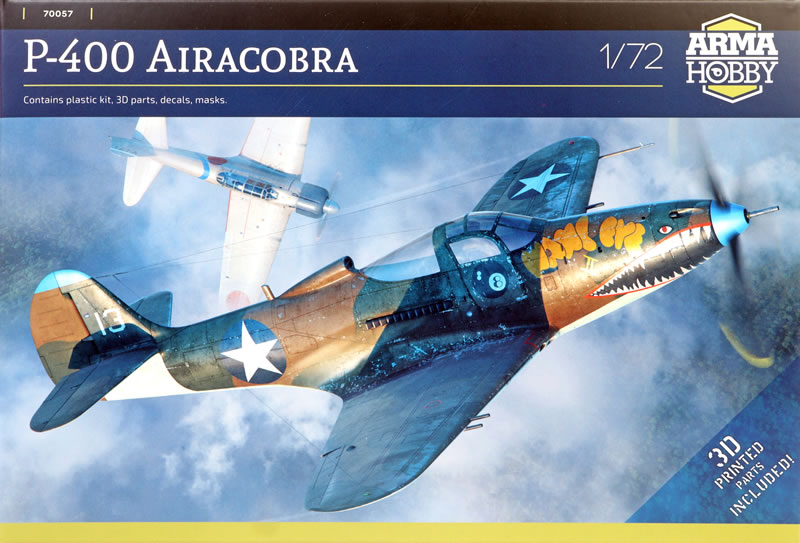
Arma Hobby, 1/72 scale
S
u m m a r y : |
Description and Item No.: |
Arma Hobby Kit No. 70057 - P-400 Airacobra |
Contents and Media: |
83 parts in grey plastic; five parts in clear plastic; one grey 3d printed resin part; three small chrome balls; yellow Kabuki die-cut self-adhesive paper masks; decals for three marking options. |
Price: |
€26.50 plus shipping available online at Arma Hobby
£29.99 UK Price (£24.99 Export Price) Plus Shipping at Hannants
and hobby retailers worldwide |
Scale: |
1/72 |
Review Type: |
First Look |
Advantages: |
High quality moulding; gorgeous surface textures and detail; many useful options including gun pods, bombs and drop tanks; poseable canopy doors; high quality decals; includes accurate 3d printed resin nose for the P-400 variant. |
Disadvantages: |
End-opening box. |
Recommendation: |
Arma Hobby's 1/72 scale Airacobra family are gorgeous kits with its crisp surface textures, high moulding quality, thoughtful parts breakdown, useful options and very high level of detail.
It is nice to see the P-400 variant now available. Although not all the options on the sprues are not mentioned in the intructions, you will be able to build many other Airacobra variants from the parts in the box too.
This is a another excellent offering from Arma Hobby. |
Reviewed by Brett Green

The Bell P-39 Airacobra was a fighter produced by Bell Aircraft for the United States Army Air Forces during the Second World War. It was one of the principal American fighters in service when the United States entered combat.
It had an unusual layout, with the engine installed in the center fuselage, behind the pilot, and driving a tractor propeller in the nose with a long shaft. It was also the first fighter fitted with a tricycle undercarriage. Although its mid-engine placement was innovative, the P-39 design was handicapped by the absence of an efficient turbo-supercharger, preventing it from performing high-altitude missions. It was therefore rejected by the RAF for use over western Europe but adopted by the USSR, where most air combat took place at medium and lower altitudes.

The P-400 was the export model of the P-39 with a less powerful cannon, using a 20 mm Hispano cannon rather than the standard 37 mm cannon.
It also had 2 .50 caliber machine guns in the nose, and 2 x .30 caliber machine guns in each wing..
* Historical background adapted from Wikipedia
Arma Hobby expands their 1/72 scale Airacobra family with Kit No. 70057, the P-400.
Arma Hobby's 1/72 scale Bell P-400 Airacobra comprises 83 parts in grey plastic, five parts in clear plastic, three small chrome balls (nose weight); yellow Kabuki die-cut self-adhesive paper masks and decals for three colourful marking options.
The subtle difference between Arma's earlier Airacobra releases and this P-400 is the inclusion of a grey 3d printed resin part for the upper gun cowl. This has unique blast tubes.
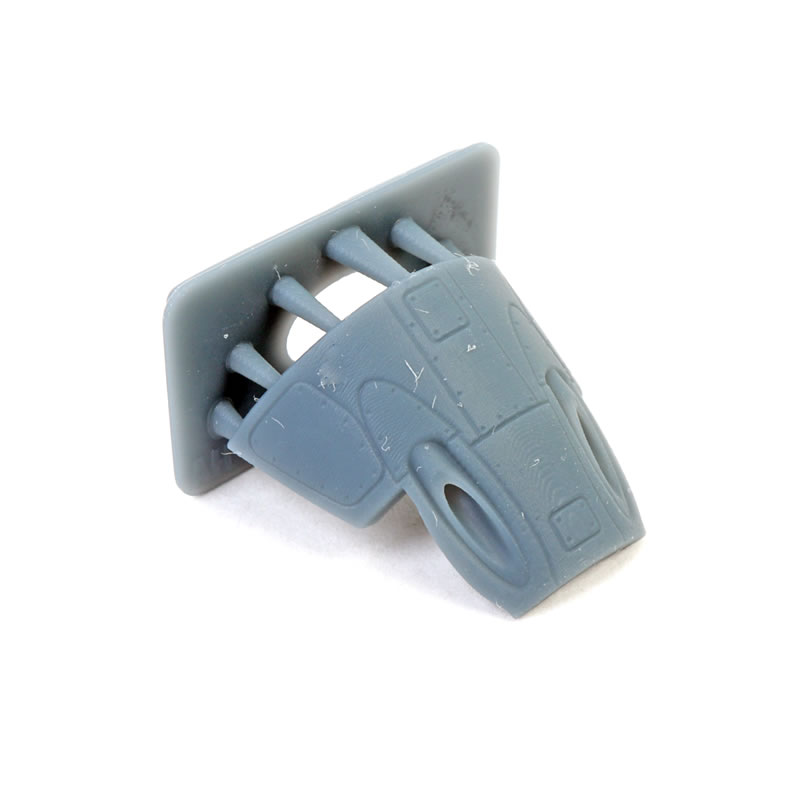
Printing quality is perfect and detail is crisp.

The grey plastic parts are delivered on two large sprues. Moulding quality is excellent with no flaws or visible moulding imperfections on my sample. The plastic parts boast a luxurious satin texture. Arma’s website advises that long-run metal moulds are used for their kit production, and it really does show.
Being a long-run kit, the parts are moulded with all the alignment aids that you would expect including locating pins, holes, slots and tabs.
Moulding quality is excellent. So far I have only found one ejector pin circle and that is only on the inside of an undercrriage door.
Sprue attachments are moulded to the surfaces of the kits so take care when cutting these off and cleaning them up.
Surface textures are just gorgeous. Recessed panel lines, circular fastener heads and other structural details are very fine.
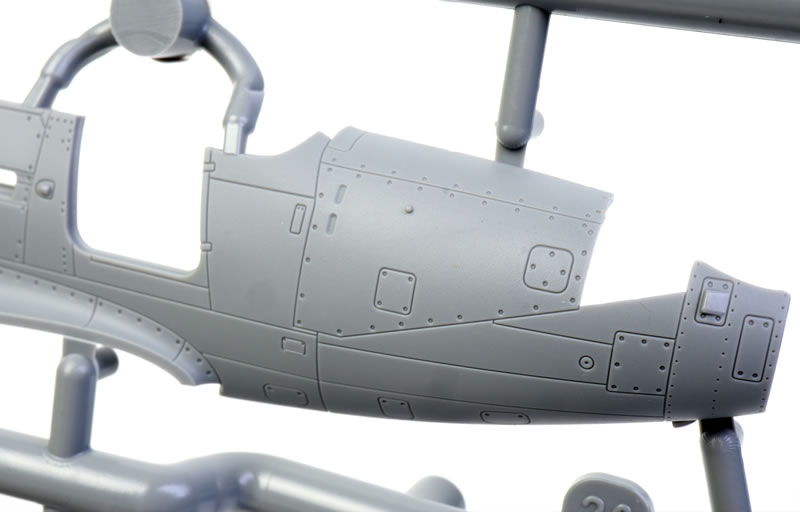
The fuselage is supplied as left and right halves with a few elements that allow some important options.
The most obvious is the forward upper gun cowl panels. Two styles are included with subtle variations.
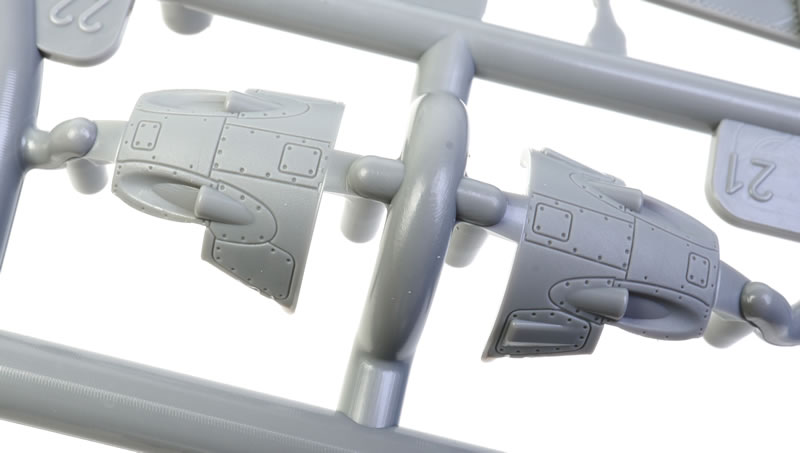
Some cockpit structural detail is moulded directly to the inside of the fuselage halves. Additional separate parts include a plastic cockpit floor, throttle quadrant; instrument panel, a moulded pair of rudder pedals, control column, radios and more.
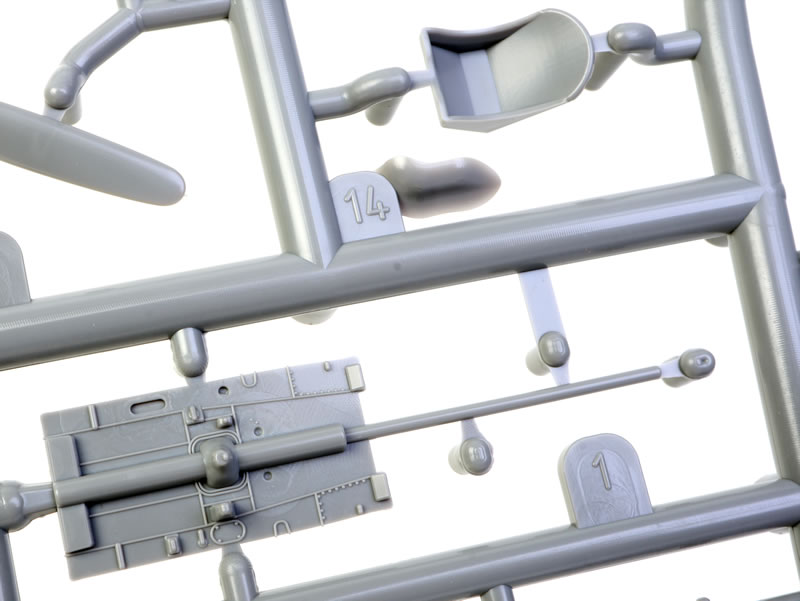
The instrument panel features raised detail that will respond well to careful dry brushing.
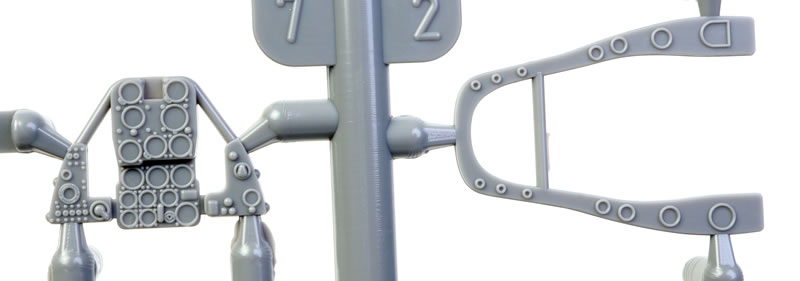
As an alternative, an overlay decal is supplied for the instrument panels and switch panel. Harness strap decals are included as well.
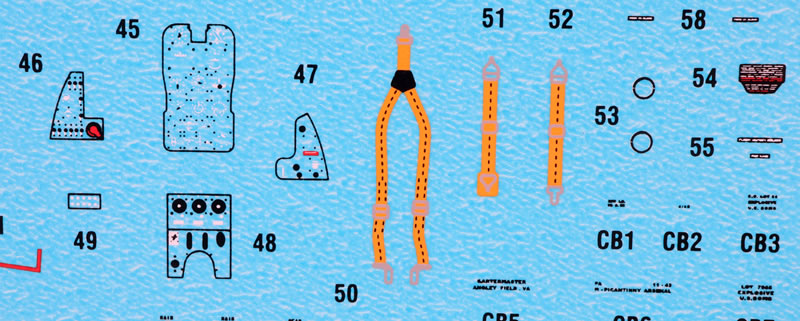
Three small chrome metal balls are supplied as nose weight. These are placed into recesses above the front landing gear bay.

Exhausts are moulded as one-piece per side. The ends are moulded solid - perfectly understandable in this small scale.

The wing parts are full span lower and separate port and starboard halves for the top. They are suitably thin at the trailing edges. Aileron hinge lines are appropriately heavier than the general panel line detailing.

The wheel wells are nicely detailed between the upper wing halves. The are presented as one piece each and feature very fine raised letter on the sidewalls. Tyre tread is smooth. The wheels are subtly bulged and flattened.

Elevators and rudder are separate parts and may be posed to taste.

The tail wheel and strut are moulded as a single part. Detail looks good.
Ordnance includes two underwing gun pods, a pair of drop tanks, 100 kg bombs and 250 lb bombs.
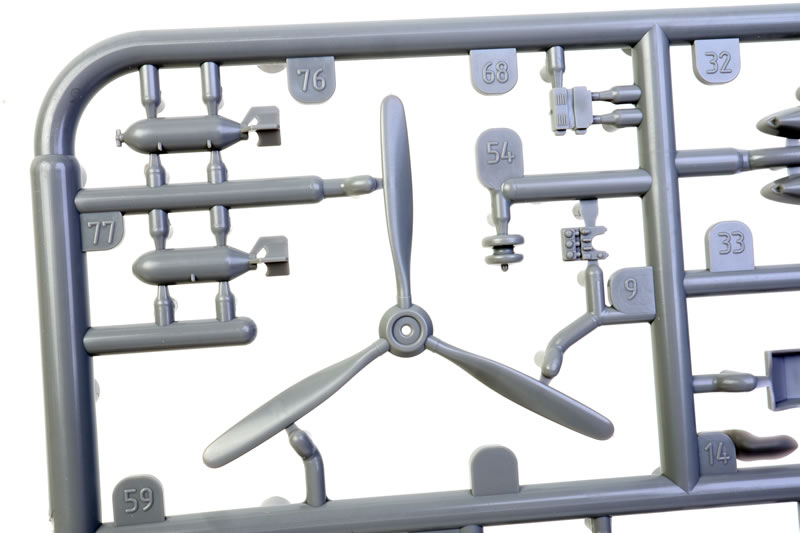
The canopy parts are thin and clear.

The two side doors are moulded as clear parts. They may be posed open or closed. Note that pilot entry and egress was usually from the starboard side. Self-adhesive die-cut masks are supplied for the windows, canopy and wheels. This is a thoughtful and time saving touch.

A number of additional parts and unused options are included on the sprue such as alternative exhausts, three different styles of propeller and more.
Instructions are supplied as a 12 page stapled A5-sized booklet.
The kit is packed into a end-opening cardboard box. I have to say that I have never been a fan of end-opening boxes - access to the parts is more difficult, loose parts can easily be lost while retrieving instructions or a larger sprue, and the format is less structurally rigid, inviting the contents to be crushed when the box is inevitably at the bottom of a pile of kits.
I know it is a nit-pick but I would prefer to see future Arma Hobby releases in a lid-style of box.
Marking Options
The kit decal sheet offers markings for five options with some colourful markings variations in camouflage and service nationality.
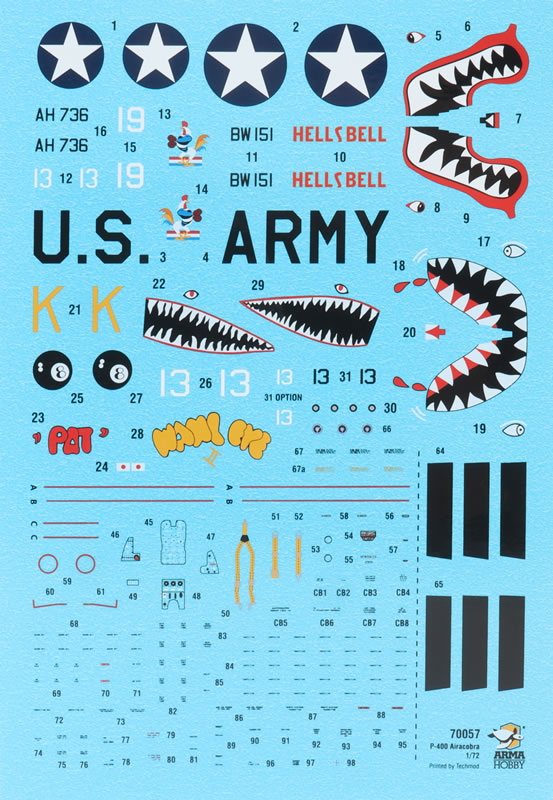
All three options are finished in DuPont equivalents of Dark Earth, Dark Green with light grey lower surfaces.
Specifically, the three subjects are:
-
P-400 Airacobra White 13 "Wahl Eye", 39FS/35FG, pilot Lt. Eugene A. Wahl, Port Moresby, New Guinea, Summer 1942
-
P-400 Airacobra "white 19", AH736, 80FS/8FG, Turnbull Airstrip, Milne Bay 1942
-
P-400 Airacobra White 13 "Hells Bell”, BW151, 67FS/347FG, pilot Lt. Robert M. Ferguson, Guadalcanal, August-November 1942
Stencil markings are printed on the same single sheet, as are propeller logos and wing walk markings.

Decals are printed by Techmod.
They are glossy, colours are well saturated and everything is in perfect register.
Arma Hobby's 1/72 scale Airacobra family are gorgeous kits with its crisp surface textures, high moulding quality, thoughtful parts breakdown, useful options and very high level of detail.
It is nice to see the P-400 variant now available. Although not all the options on the sprues are not mentioned in the intructions, you will be able to build many other Airacobra variants from the parts in the box too.
This is a another excellent offering from Arma Hobby.
Thanks to Arma Hobby for the sample
Review Text and Images Copyright © 2024 by Brett Green
Page Created 8 January, 2024
Last updated
9 January, 2024
Back to HyperScale Main Page
Back to Reviews Page |
Home
| What's New |
Features |
Gallery |
Reviews |
Reference |
Forum |
Search